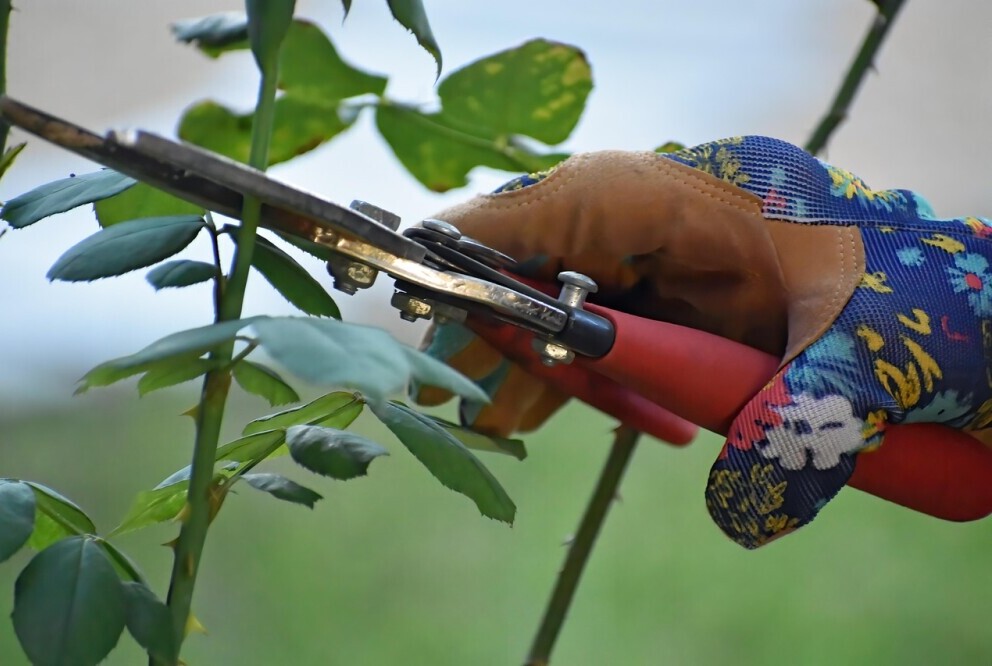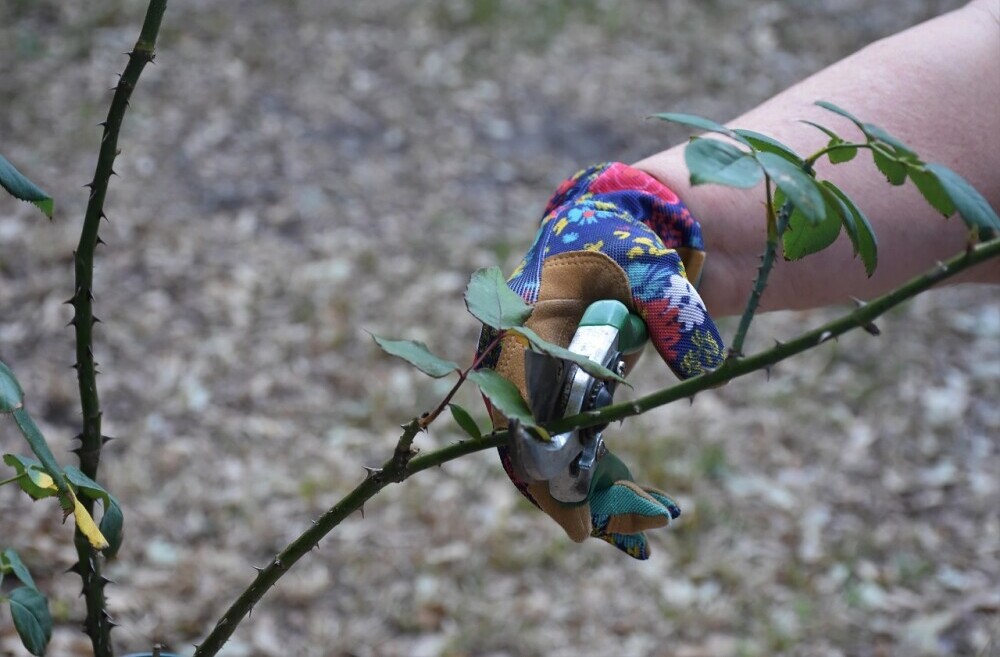Iceberg roses have earned a solid spot in gardens everywhere thanks to their steady blooms and stubborn resistance to disease.
With their crisp white petals and compact, bushy shape, it’s easy to see why they’re a top pick for both beginners and seasoned rose enthusiasts.
Looking for ways to help your Iceberg roses bloom even more? Proper pruning is the key, and this Iceberg rose pruning guide breaks it down step by step.
By trimming your Icebergs at the ideal times and in the right way, you help them thrive, show off more flowers, and keep a tidy look all season long.

Understanding Iceberg Rose Growth
Iceberg roses typically grow into bushy, slightly sprawling plants that reach about 3 to 5 feet tall and can spread just as wide.
Their growth habit makes them awesome for borders, hedges, or even big planters if space is tight.
Their real magic, though, is that nonstop flower show—Icebergs burst with blooms in late spring or early summer, and with a little attention, they’ll put out more flowers again and again, often until fall arrives.
Here’s one small-but-important detail about Iceberg rose growth: their flowers form on new wood, meaning the shoots that grow that same year.
This is a bonus for anyone wanting to prune, because you can confidently remove older or weaker growth knowing you aren’t losing next season’s flowers.
The real trick is timing; smart pruning keeps that flowering cycle rolling and ensures a lush, healthy plant.
Why Pruning Matters for Iceberg Roses
Some gardeners get nervous about pruning, but understanding its purpose can help calm your nerves. Pruning is essential for Icebergs for several reasons:
- Churns out new growth and more flowers: Cutting branches back signals your rose to push up fresh shoots that will be full of flowers.
- Boosts air circulation: Opening up the middle lets air move freely, reducing the risk of pests and fungi like black spot or powdery mildew.
- Keeps the shape neat and tidy: Unpruned Icebergs may get wild. A bit of shaping keeps them tidy and garden-friendly.
- Gets rid of dead or frail wood: Eliminating these parts allows your Iceberg to concentrate its energy where it matters most – on making those signature clusters of clean white flowers.
Pro Tip: A quality pair of Felco Hand Pruners or Fiskars Bypass Secateurs makes cleaner cuts, which helps plants heal faster and produce stronger blooms.
Timing Your Pruning
The sweet spot for pruning Iceberg roses is just before they wake up in spring.
Late winter to very early spring—right as the buds begin to swell but haven’t yet opened—is perfect.
This primes your plant for a growth spurt and a flood of blooms. If you’re in a chillier climate, hold off until the danger of frost is definitely over so you don’t damage those tender new cuts.
In milder spots, you can kick things off a bit earlier as soon as frost risk is gone.
A light prune after the first flower flush is also helpful. Deadheading spent blooms and gently tidying up the shape can coax another vibrant round of flowers.
Do this throughout summer by snipping faded flowers and stopping any runners, rather than taking off big chunks.
Avoid major pruning during rainy or extra-humid stretches, as this might let fungi sneak in through open cuts.
Tools You’ll Need
The right gear makes Iceberg rose pruning easier and healthier for your plants. Here’s what helps get the job done right:
- Sharp hand pruners or secateurs: For most stems and shoots, these let you make clean, snappy cuts that heal better. Try Felco F-2 Pruners or Corona Bypass Pruners
- Gloves: Though Icebergs aren’t super thorny, gloves protect hands from nicks and sap. Rose Gardening Gloves, especially long gauntlet-style ones.
- Loppers: Must-haves for trimming older or thicker canes that the hand pruners can’t handle. Consider Fiskars PowerGear Loppers
- Disinfectant or rubbing alcohol: Wiping your blades between plants (and even between big cuts) keeps diseases from spreading around the garden. Garden Tool Disinfectant Spray
Step-by-Step Pruning Guide
- Cut Away Dead or Damaged Canes: Hunt for branches that look black, brittle, or dried-out. Trim these all the way down to healthy, green wood or to the main stem, removing disease risk and giving the plant a fresh start.
- Remove Crossing or Weak Branches: Branches that rub together or appear skinny should be trimmed out. This opens the bush for airflow and light while avoiding bark damage from friction.
- Shape the Bush: Aim for an open center with a bushy outline. Cut as needed to keep a rounded, even look, making your cuts just above buds that point outward from the center of the bush.
- Snip Above Outward-Facing Buds: Wherever you cut, do it about 1/4 inch above an outward-facing bud. This guides new shoots away from the middle, stopping overcrowding as new growth pops in.
- Reduce Height or Width: If your Iceberg seems to be taking over, shorten main canes by about one-third. Potted plants can handle a bit more shaping but don’t get too enthusiastic. Heavy cuts can stress the plant and set back the flower show.
✂️ Keep your blades sharp with a Pruner Sharpening Tool so every cut is clean and heals fast.
If you prefer a visual approach, searching for diagrams or pruning videos from trusted rose societies or expert gardeners will help you see these steps in action. Seeing where and how to cut makes a big difference!
How to Prune for Repeat Blooms
Deadheading is a simple but effective trick for keeping Iceberg roses blooming for months.
As soon as a flower cluster finishes, remove the flower stem just above the first group of leaves with five leaflets.
Trimming right here encourages sturdy new flowering shoots rather than lots of leafy growth.
After the first big flower display in late spring or early summer, go over your bush for some tip pruning.
That means gently snipping a few inches off strong new shoots to signal your plant to keep pumping out flowers instead of slowing down for summer.
Don’t overdo it—small trims keep the plant robust and maximize blooms when it’s hot.
Using a light touch after that first round of flowers is key; it helps your plant recover quickly and keeps the flower power high all season long.
Tips for Healthy Iceberg Rose Pruning
- Sanitize your tools before starting and after each plant—especially if you spotted fungus last year. A quick dip in rubbing alcohol or a mild bleach mix does the job. Sanitize tools between plants with Disinfectant Spray with Wipes
- Stay away from heavy pruning or big cuts when it’s wet or extra humid. Dampness gives fungi an easy way in through fresh cuts.
- Top up mulch around the base with compost or bark after you prune. Mulch keeps the soil moist, insulates roots, and keeps weeds down. Refresh mulch with Organic Bark Mulch after pruning.
- Feed your Iceberg with a rose fertilizer or organic slow-release mix after major spring pruning. This gets those new shoots off to a strong start and primes the plant for a season-long flower show.
- On hot afternoons, keep an eye on wilting or sunburned leaves after a heavy prune, and water at the base of the plant instead of soaking the leaves. This keeps your rose healthy for the long haul. Water at the base using a Drip Irrigation Kit to reduce fungal risk
- If you’re new to pruning, start small. More frequent light prunes let you track progress and boost confidence, rather than trying to shape the bush all at once.
Common Mistakes to Avoid
- Cutting away too much in one go. Removing more than a third of the plant can stress your Iceberg and limit blooms that year.
- Pruning too early in frosty areas. New shoots are tender, so wait until the last frost has passed to keep them safe.
- Using dull tools—blunt blades crush stems rather than making clean slices. Clean cuts heal faster and reduce disease risk.
- Forgetting to clear out dead or diseased wood. Just a couple nasty branches can set up bigger problems down the road.
- Ignoring air circulation. Crowded canes create a humid microclimate that favors mildew and pests. Opening up the center of the bush is key to keeping things fresh.
Frequently Asked Questions
When is the best time to prune Iceberg roses?
Late winter to very early spring, just after the coldest part of winter is done and right before buds burst. This sets your rose up for another fantastic season without exposing new growth to frost.
How much should I prune my Iceberg roses each year?
Normally, trim back about a third of the canes’ length, taking out old, weak, or crowded stems as you go. Keep your plant’s preferred size and shape in mind as you trim.
Can pruning too much damage my rose plant?
Yes. Cutting more than a third of the bush at once or pruning often through the season can slow down blooms and make recovery tough for your rose.
Do Iceberg roses in pots need pruning?
For sure. Container-grown Icebergs love regular pruning, just like those in the ground. You’ll want to keep up with shaping and removing old wood so they thrive and stay the right size for their planter.
Can I use pruned Iceberg canes for propagation?
Absolutely! Healthy, non-flowering cuttings taken during pruning can be rooted in soil or sand. Just dip the cut end in rooting hormone and keep them moist; soon you’ll enjoy new Iceberg plants for your garden or to share.
What should I do if my Iceberg rose stops blooming?
Check for signs of overcrowding or dead wood. Sometimes a heavy prune or a switch up in feeding is needed to get things back on track. Also, check your light—Icebergs need plenty of sun to bloom well.
Can I propagate pruned canes?
Absolutely! Use Rooting Hormone Gel and moist soil to grow new plants.
Our Top Amazon Picks for Iceberg Rose Pruning
Here are some handpicked tools and supplies that make pruning easier and keep your Icebergs thriving:
- Felco F-2 Classic Hand Pruners – Sharp, durable, and long-lasting.
- Fiskars PowerGear Loppers – Perfect for thick canes.
- Rose Gauntlet Gloves – Protect hands and arms from thorns.
- Miracle-Gro Rose Fertilizer – Boosts new growth and blooms.
- Garden Tool Sharpening Stone – Keeps blades razor-sharp.
- Rooting Hormone Gel – Propagate pruned cuttings with ease.
Wrapping Up
Mastering Iceberg rose pruning is really down to timing, technique, and having a few helpful tools nearby.
Regular, smart pruning keeps your plant strong, coaxes out repeat blooms, and cuts down the risk of disease.
With a bit of practice and an eye for detail, you’ll get pure white flower clusters coming back year after year, adding fresh charm and structure to your garden borders or patio pots.
For even more success, check out my detailed guide on overall Iceberg rose care, covering watering, feeding, and protecting these beautiful plants during winter.
Happy gardening—your Icebergs will thank you with a nonstop show of blooms!
Here’s a little transparency: Our website contains Amazon affiliate links. This means if you click and make a purchase, we may receive a small commission. Don’t worry, there’s no extra cost to you. It’s a simple way you can support our mission to bring you quality content.”





I literally just bought some of these for my front yard! I’ve been so nervous about pruning them because I don’t want to mess it up, but this post makes it sound so easy. Thank you for the tips.
I have heard they’re great for beginners, but I had no idea why they were so resistant to disease.
Hi Ann!
That’s so exciting—Iceberg roses are a beautiful choice for a front yard, and I’m so glad the post helped ease some of those pruning nerves. You’re definitely not alone—pruning can feel intimidating at first, but once you get the hang of it, it becomes second nature.
And yes, they really are great for beginners! One of the reasons Iceberg roses are so resistant to disease is because they were bred to be hardy and low-maintenance, with strong genetics that help them naturally fend off common issues like black spot and mildew.
Just be sure to give them good air circulation and don’t let water sit on the leaves—and they’ll reward you with blooms for days!
Keep us posted on how they do in your garden. I’d love to hear how they grow!